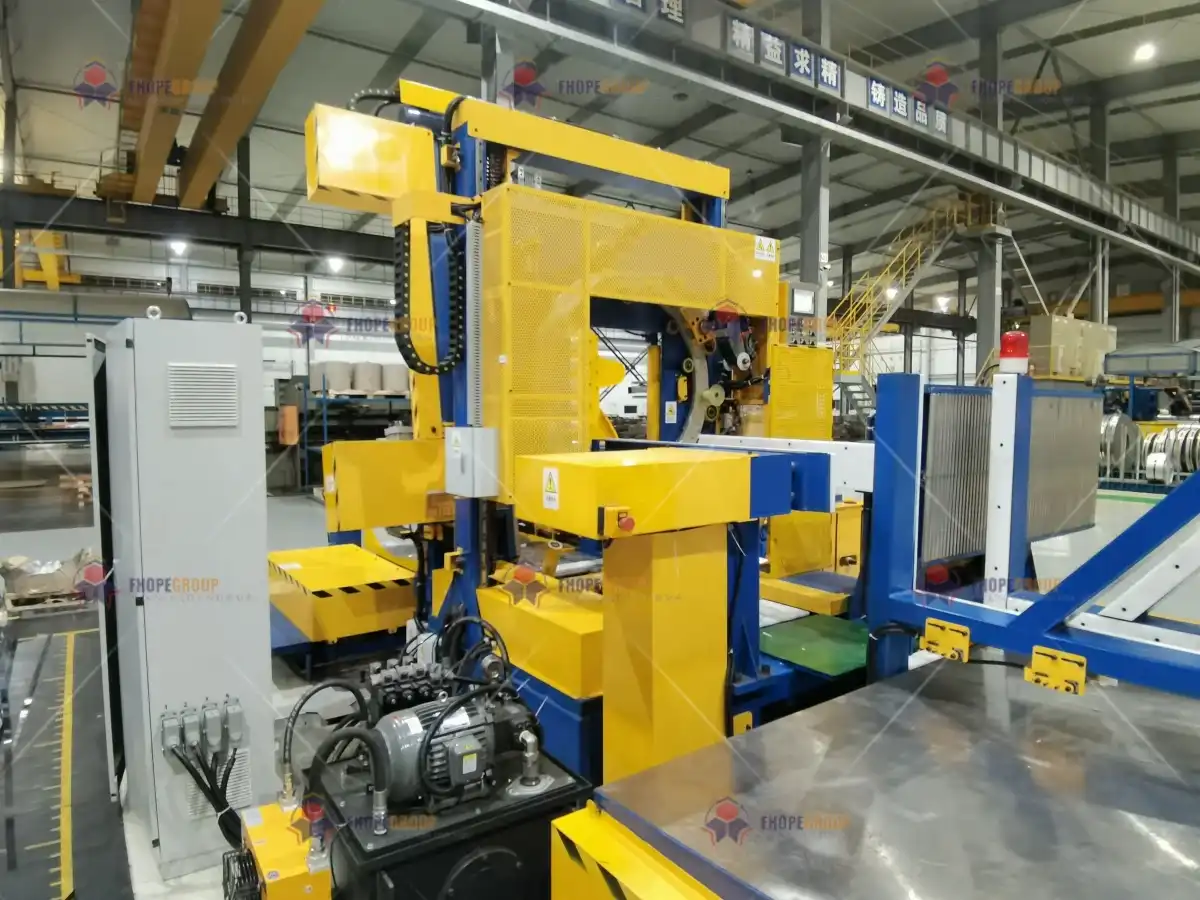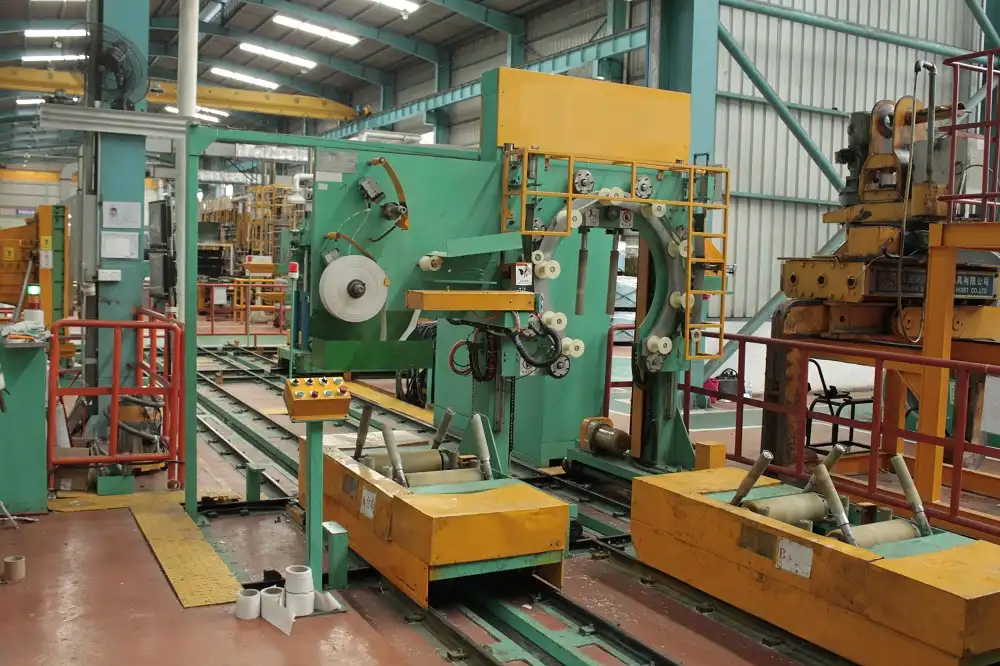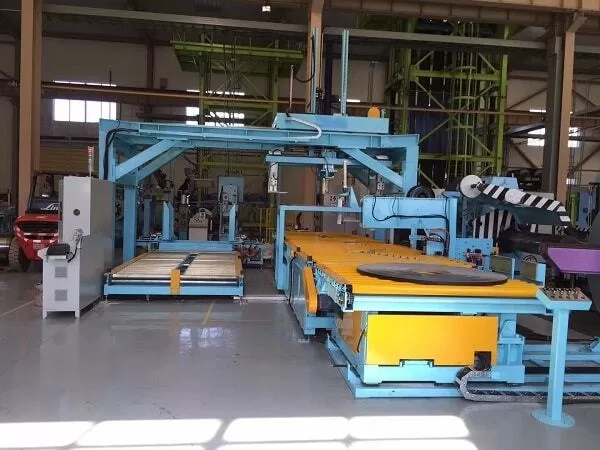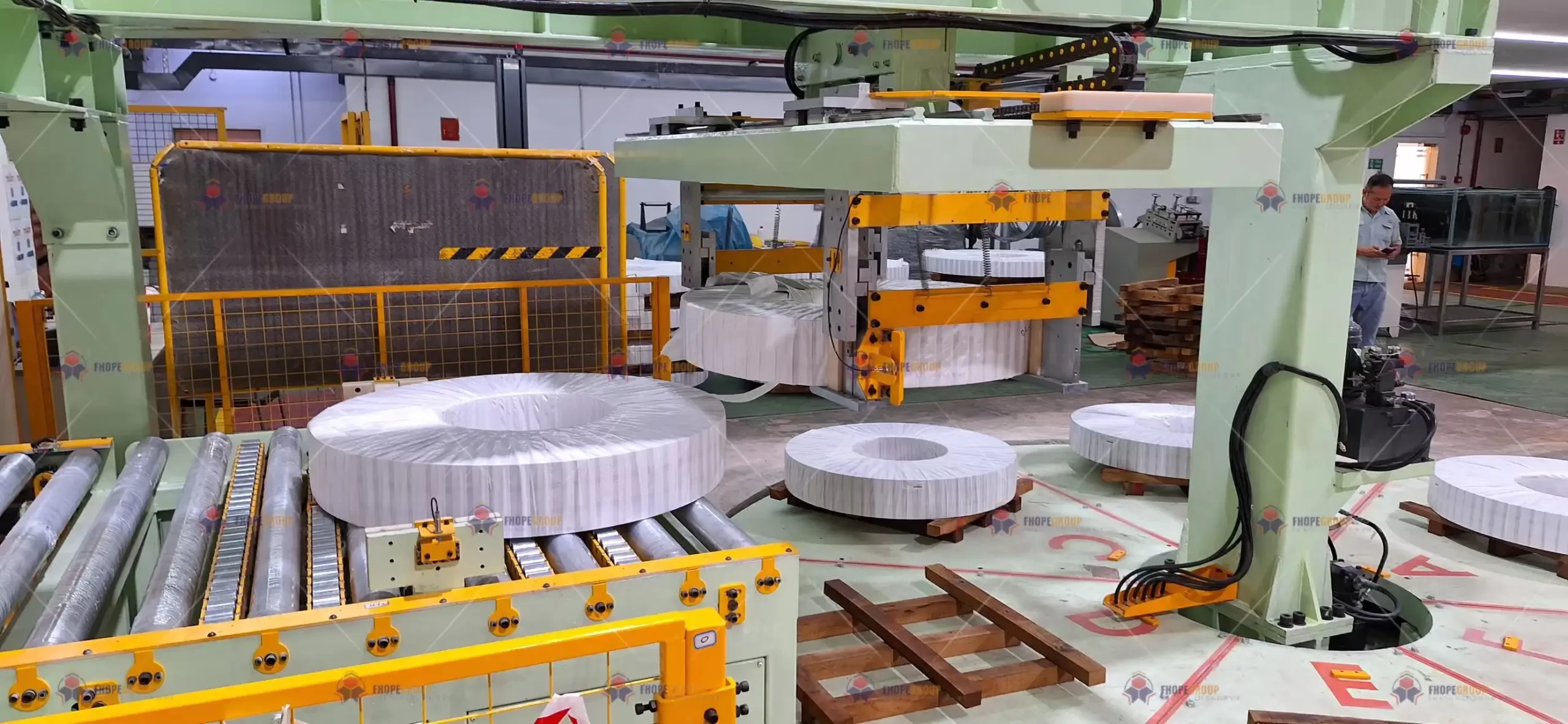Your factory floor is a battlefield. Every day, you fight against rising costs, tight deadlines, and fierce global competition. You've optimized your production lines and streamlined your raw material sourcing. But there's a nagging problem at the very end of your process: the packing and shipping area. It feels slow, inefficient, and like a constant source of frustration. This final, critical step might be the anchor holding your entire operation back, preventing you from meeting the aggressive demands of the global market. I've been there. I started on the factory floor myself, and I know that feeling. But I also learned that this challenge is not just a problem; it's a massive opportunity for growth.
No, your factory cannot sustainably keep up with global demands without packing automation. Manual packing creates critical bottlenecks, inflates your operational costs through labor and material waste, and simply cannot deliver the consistency, speed, and data integration required to compete in today's demanding market. In the modern industrial landscape, automation is no longer a luxury for the final stage of production; it is absolutely essential for your factory's survival and future growth.

You have invested millions in creating a world-class production facility. It makes no sense to let an outdated, manual packing process undermine all that hard work. The final step of your production should be a showcase of your efficiency, not a weak link in the chain. This isn't just about wrapping coils faster. It's about transforming your packing area into a strategic asset that saves you money, improves your capacity, and prepares you for the challenges of tomorrow. Let's break down how this transformation works and what it means for your bottom line.
How Can Automation Slash Your Rising Energy and Labor Costs?
You watch your monthly expenses, and two figures always stand out: energy and labor. They are volatile and constantly rising. You feel the pressure to produce more with less, but your packing department seems to be a black hole for these resources. You see teams of workers manually handling and wrapping products, a process that is not only slow but also consumes significant manpower and runs equipment inefficiently. You have to wonder, are you still paying for tasks that a machine could perform more effectively, using less energy and freeing up your skilled workers for more valuable roles?
Automation directly slashes these costs by optimizing energy use for each package and significantly reducing the reliance on manual labor. A modern, automated packing line is engineered for high efficiency. It minimizes the idle time that wastes electricity and uses precision to reduce material consumption. This allows you to reallocate your skilled workforce from repetitive packing tasks to roles that require human ingenuity, like quality control and process improvement.

Dive Deeper: The Tangible Impact on Your Operating Budget
When we talk about cost savings, we need to look beyond the obvious. It's a combination of direct and indirect benefits that create a powerful financial impact. As an engineer who has designed and installed these systems, I've seen the numbers firsthand. It’s not just theoretical; it’s a practical reality for factory owners.
Direct and Indirect Financial Gains
The most immediate saving comes from labor. But it's more than just wages. You reduce costs associated with recruitment, training, benefits, and the high turnover often seen in physically demanding jobs. Human error is another major cost. A mis-wrapped coil can be damaged in transit, leading to customer complaints, returns, and damage to your brand's reputation. Automation delivers consistent, high-quality wrapping every single time, eliminating this expensive variable.
Energy savings are also significant. Modern automated lines use variable frequency drives (VFDs) on their motors. This means they only draw the power needed for the specific task, instead of running at full capacity all the time. They also have smart standby modes, powering down during gaps in production. An old machine, or a series of manual tools, running constantly or intermittently throughout a shift, simply cannot match this level of energy intelligence. This directly addresses the challenge of volatile energy prices by lowering your baseline consumption.
A Comparative Look at Costs
Let's put this into a simple table to see the difference. This is a simplified model, but it reflects the real-world financial shifts I've helped my clients achieve.
| Cost Factor | Manual Packing Process | Automated Packing Line |
|---|---|---|
| Labor | 4-6 operators per shift | 1 supervisor per shift |
| Wages & Benefits | High and recurring | Significantly reduced |
| Training Costs | Constant due to turnover | One-time, for skilled staff |
| Human Error Rate | 3-5% (rework, damages) | <0.1% |
| Energy Usage | High, inefficient, constant | Optimized, variable, standby modes |
| Material Waste | 10-15% (inconsistent use) | <2% (precision application) |
| Cost per Unit | High | Low and predictable |
When I started my own factory, controlling these operational costs was the key to my survival and eventual success. I remember analyzing our stretch film usage. With manual wrapping, it was all over the place. Some workers used too much, others too little. After we installed our first automated wrapper, our film consumption dropped by over 20% overnight, with better, more secure wrapping. That saving alone paid for a portion of the machine's cost within the first year. It’s these tangible, measurable improvements that turn an equipment purchase into a true investment.
Is Your Aging Packing Line a Bottleneck to Hitting 95% Uptime?
You've set an ambitious goal: 95% capacity utilization. You invested in smart production scheduling and state-of-the-art manufacturing equipment to make it happen. Your plant is capable of producing steel coils at a tremendous rate. But then, you walk to the end of the line. You see finished coils piling up, creating a logjam. Your multi-million dollar production line has to slow down or even stop because the final packing step, handled by a 15-year-old machine and manual labor, simply can't keep up. This isn't a minor inconvenience; it's a critical bottleneck that makes your 95% uptime goal impossible to reach.
Yes, an aging, semi-automatic, or manual packing line is almost certainly the primary bottleneck preventing you from achieving your target uptime. Its inherent slow speed, frequent mechanical failures, and inability to sync with your high-speed production machinery create a hard cap on your factory's overall output and efficiency. You cannot optimize the whole if a single part is broken.

Dive Deeper: From Bottleneck to Throughput Engine
A bottleneck is one of the most frustrating things a factory owner can face. You have all this potential, but it's being choked off by one weak point. I once visited a steel mill with a brand-new, high-speed slitting line. It was a beautiful piece of engineering. But just a few meters away was a packing area that looked like it was from a different century. The plant manager confessed that they had to run the new slitter at only 60% of its capacity. Why? Because the packing team couldn't clear the coils fast enough. They were deliberately hamstringing their most valuable asset.
The True Cost of Inefficiency
The cost of this bottleneck isn't just the lost production time. It's a cascade effect. Floor space gets clogged with unpackaged inventory, increasing the risk of damage and making the workspace unsafe. Operators are stressed, trying to keep up. And most importantly, your capital-intensive machinery is not generating the return on investment you planned for. Let's be clear: a production line is only as fast as its slowest part. If your packing line can only handle 20 coils per hour, but your mill produces 30, you have a permanent 10-coil-per-hour deficit. Your effective uptime is artificially lowered, not by machine failure, but by process imbalance.
Reliability: Old vs. New
An aging machine, as you know well, is a liability. Failure rates climb, spare parts become scarce, and every breakdown is a crisis. This is reactive maintenance, and it kills efficiency. A modern automated packing line is built for reliability. But more than that, it's built for predictive maintenance.
| Feature | Aging Packing Line (>15 years) | Modern Automated Line |
|---|---|---|
| Throughput Speed | Low, inconsistent | High, perfectly matched to production |
| Reliability (MTBF) | Low, unpredictable failures | High, predictable service intervals |
| Maintenance | Reactive (fix when it breaks) | Predictive (sensors flag issues early) |
| Integration | Standalone, no communication | Fully integrated with line control |
| Impact on Uptime | Major cause of downtime | Maximizes overall plant uptime |
Modern systems are equipped with IoT sensors that monitor motor temperature, vibration, and cycle counts. This data is fed to your control system, alerting you before a component fails. You can schedule maintenance during planned downtime instead of suffering a catastrophic failure during a critical production run. This shift from reactive to predictive maintenance is fundamental to achieving and sustaining 95% uptime. It turns your packing line from a source of problems into a reliable, predictable, and efficient part of your operation.
Will Manual Packing Meet Tomorrow's Digital and Environmental Standards?
The world is changing. Your customers, investors, and government regulators are asking for more. They want data, traceability, and proof of your commitment to environmental sustainability. You are planning a digital transformation, deploying MES and IoT platforms to get a full view of your operations. But how does your packing area fit into this vision? Can you really achieve a "smart factory" when the final step of your process relies on paper checklists and manual labor? A manual process is a data black hole, making compliance and integration a nightmare.
No, a manual packing process is fundamentally incompatible with the demands of a modern, data-driven, and environmentally conscious factory. It cannot generate the necessary data for your digital systems, it cannot provide the material efficiency required to meet environmental standards, and it lacks the traceability that global customers now expect as a minimum requirement.

Dive Deeper: Future-Proofing Your Factory
As someone who has helped many clients navigate these changes, I can tell you that compliance and data are no longer "nice to have." They are core business requirements. Trying to bolt these capabilities onto a manual process is like trying to put a modern engine in a hundred-year-old car. It just doesn't work. The solution is to design the process with these needs in mind from the very beginning.
The Packing Line as a Data Hub
Think of a modern automated packing line not as a machine, but as a data-gathering station. This is a concept that forward-thinking leaders like yourself understand is crucial. As each coil enters the line, it is identified by a barcode or RFID tag. The system then logs everything:
- Precise weight and dimensions.
- Time and date of packing.
- Type and amount of packing material used.
- The operator who supervised the run.
- A unique ID for the final, packaged product.
This data is automatically sent to your Manufacturing Execution System (MES) or Enterprise Resource Planning (ERP) system in real-time. This achieves your goal of "comprehensive production visualization." You no longer have a blind spot at the end of your line. You have complete, accurate, and instant traceability from raw material to shipped product. This is invaluable for quality control, inventory management, and providing your customers with the data they demand.
Meeting Environmental and Safety Goals
Environmental pressure is not going away. An automated system is your best ally in meeting this challenge. First, it tackles material waste. A wrapping machine is programmed to apply the exact amount of stretch film or paper needed for a secure wrap, no more, no less. This can reduce your consumption of plastics and other materials by 10-20%, a direct win for both your budget and your environmental, social, and governance (ESG) report.
Second, it dramatically improves safety. Manually handling heavy, sharp-edged steel coils is one of the most dangerous jobs on the factory floor. Automation removes workers from harm's way, reducing injuries, lowering insurance premiums, and demonstrating a real commitment to your employees' well-being. This is a critical part of the "Social" in ESG.
| Compliance Factor | Manual Packing Process | Automated Packing Line |
|---|---|---|
| Data Integration | None. Manual entry, prone to errors. | Seamless, real-time data to MES/ERP. |
| Product Traceability | Difficult, paper-based, unreliable. | Complete, automated, from coil to customer. |
| Material Efficiency | Inconsistent, high waste. | Highly efficient, minimal waste. |
| Reporting | Manual, time-consuming. | Automated reports for compliance & ESG. |
| Worker Safety | High risk of injury. | Significantly improved, removes hazards. |
Investing in an automated packing line is not just about keeping up; it's about leading the way in building a smarter, safer, and more sustainable factory for the future.
What's the Real ROI of a Strategic Partnership vs. Just Buying a Machine?
You are ready to invest in new equipment. You can send out a request for quotes and get a dozen offers for a packing machine. Most will compete on price. But you are a seasoned leader. You know that the cheapest machine can quickly become your most expensive problem if it's not the right fit, if the installation is botched, or if the after-sales support is nonexistent. You are not just looking to buy a piece of hardware. You are looking to solve a complex business problem. The real question is, are you looking for a simple supplier, or a true strategic partner?
The real return on investment (ROI) from a strategic partnership is vastly superior to that of just buying a machine. A partner delivers a total solution. This includes in-depth process analysis, custom engineering, seamless integration, comprehensive training, and long-term support. This holistic approach minimizes your risk, guarantees performance, and ensures the equipment evolves with your business, delivering value that far exceeds the initial purchase price.

Dive Deeper: Moving Beyond the Transaction
Throughout my career, from an employee to a factory owner, I learned one lesson above all others: the people you work with are more important than the equipment you buy. A machine is a tool. A partner brings expertise, commitment, and a shared desire for your success. This is the core philosophy of my company, SHJLPACK. We don't just sell machines; we build solutions.
Total Cost of Ownership (TCO)
A smart entrepreneur like you looks at the Total Cost of Ownership, not just the sticker price. A cheap machine with poor reliability will cost you a fortune in downtime. A system that is difficult to integrate will cause delays and require expensive consultants. A supplier with poor support will leave you stranded when you need help most. A true partner works with you to minimize the TCO. We start by understanding your entire process, not just the packing part. We analyze your product flow, your building layout, and your future goals. The solution we design is guaranteed to fit your specific operational reality.
I once worked with a client in Mexico who was in a situation very similar to yours. He had bought a packing line from a supplier based on a low price. It never performed to spec. The supplier's support team was unresponsive. His frustration was immense. He called us, and the first thing we did was send an engineering team to his plant for a week. We didn't talk about our machines. We talked about his problems. We mapped his entire workflow. Only then did we design a complete handling and packing solution that integrated perfectly with his existing MES. Two years later, he told me, "Vincent, the machine is great. But what I am most grateful for is the peace of mind. I know you are there for us." That is the ROI of a partnership.
A Partner for the Future
Your goals are ambitious: digitalization, 95% uptime, lower energy use. You need a partner who understands these goals and can help you achieve them. It's not just about installing a machine; it's about providing a roadmap for the future.
| Aspect | Machine Supplier | Strategic Partner (like SHJLPACK) |
|---|---|---|
| Focus | The transaction, the sale | The long-term relationship, your success |
| Process | Sells a standard product | Analyzes your needs, designs a custom solution |
| Scope | Delivers a machine | Delivers a fully integrated system with support |
| Expertise | Product specifications | Deep industry and process engineering knowledge |
| Goal | Make a one-time profit | Become a trusted advisor for your growth |
| ROI | Based on machine price | Based on improved TCO, uptime, and efficiency |
As a business owner who is grateful for the success this industry has given me, my mission now is to share what I've learned. The right partnership provides you with more than just a machine; it provides you with decades of experience to help you avoid common pitfalls and make the best possible investment for your factory's future.
Conclusion
Automating your packing line is not an expense. It is a powerful strategic investment in your factory's efficiency, compliance, and long-term growth. Let's build that future-proof solution together.





